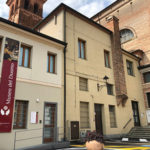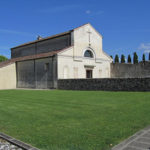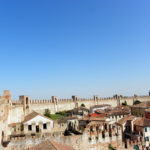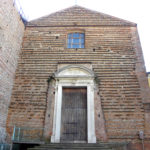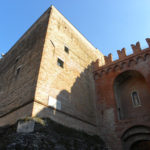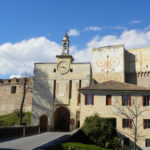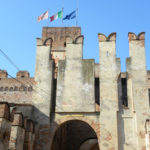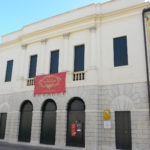Santa Lucia di Brenta is the church of an isolated Benedictine monastery which was located on the banks of the river Brenta already before the 12th century. The church was devastated and abandoned during the 14th century. When it reopened in the 16th century it had been beautifully decorated with frescos by Jacopo dal Ponte and was now part of a little village. The church was in service until 1867 but after that it is not mentioned anymore. After the second world war Giuseppe Cappello, free member of the ministry of cultural heritage tracked down the church because of a little book of accounts: hardly anything was left over from the religious buildings apart one of them which had been transformed into a poor farm house where apartment, stables, cellars and sheds occupied a building no longer than 15 m.
The church is located in S. Croce Bigolina of Cittadella, Via S. Lucia.
Open to visitors upon booking at the tourist office IAT
Oratory Cà Micheli
The baroque oratory Cà Micheli in Santa Croce Bigolina has been built in 1744 by the noble venetian family Michel and has been dedicated to the Virgin Mary Carmine.
The oratory was finished on novembre 19th of the same year and in 1754 provided with the relics of the blessed Gregorio Barbarigo, Saint Luigi Gonzaga, Saint Gaetano of Thiene, the wood of the holy cross and the robe of pope Pius V.
Afterwards the property passed from the Michel to the Wiel and then to Maria Beatrice d’Este, archduchess of Austria, who in 1810 had the ashes of her father Ercole Rinaldo III d’Este brought here as witnesses a tombstone well visible in the interior.
Towards the 1890 the oratory was purchased by the princess Maria Giovanelli and since then was named S. Gaetano, as it is known still today. Later on it got again in private hands until in the 80s when by the good offices of the Pro Loco of Santa Croce Bigolina it was purchased by the municipality of Cittadella.
The interior shows an octagonal map and on the altar the marble statues of the Madonna with child, Saint Luis and Saint Gaetano. The floor of the choir presents polychrome marble inlaids.

